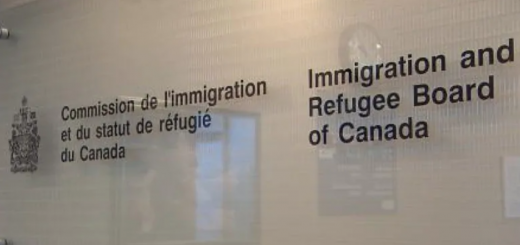Systemic Oppression in Sentencing: SCC Grants Leave to Appeal on Constitutionality of Limiting Conditional Sentences in R v Sharma

In July 2020, the Ontario Court of Appeal (“ONCA”) ruled that two provisions of the Criminal Code are unconstitutional, ultimately making conditional sentences available to more offenders. In particular, the ONCA ruled that s.742.1(c) and s.742.1(e)(ii) of the Code violated Cheyenne Sharma’s section 15 right to equality on the basis of race and section 7 right to liberty under the Charter of Rights and Freedoms. The federal government applied to appeal R v Sharma, 2020 ONCA 478 [Sharma], and on January 14, 2021, the Supreme Court of Canada (“SCC”) granted leave to appeal, meaning they will hear this case in the near future.
Legislative Context
In 1996, Parliament introduced major sentencing reforms to the Criminal Code, which included the option of conditional sentences under s.742.1 and what are now known as Gladue principles under s.718.2(e). Conditional sentences are served in the community instead of jail, and usually take the form of house arrest. Gladue principles instruct judges to take judicial notice of the systemic circumstances, such as those facing Indigenous offenders and accordingly use all available sanctions other than imprisonment, including conditional sentences. The purpose of these particular sentencing reforms was to address the overincarceration of Indigenous peoples in Canadian prisons, by requiring consideration of the impacts of colonialism on Indigenous individuals who are captured by the criminal justice system. In this way, courts are directed to focus on reducing the number of Indigenous offenders who are sentenced to jail and more generally address the issue of restorative justice in sentencing. R v Gladue, [1999] 1 SCR 688 [Gladue], which first interpreted s.718.2(e), commented on the role of sentencing judges:
They determine most directly whether an aboriginal offender will go to jail, or whether other sentencing options may be employed which will play perhaps a stronger role in restoring a sense of balance to the offender, victim, and community, and in preventing future crimes (Gladue, para 65).
Conditional sentences are a tool to help sentencing judges realize the aims of the Gladue principles and promote an alternative to the continued colonial incarceration of Indigenous peoples. Originally, they were available as an alternative to those sentenced to less than two years in prison. However, in 2012, Parliament, under Stephen Harper’s government, introduced another set of sentencing reforms through the Safe Streets and Communities Act, which amended the Code. These reforms opted for a ‘tough on crime’ approach instead of a restorative justice approach. They added many mandatory minimum sentencing provisions and removed the availability of conditional sentences for some offences under s.742.1(c) and s.742.1(e)(ii) of the Code. Ultimately, the Safe Streets Act limited sentencing judges’ discretion and power to follow the directive of s.718.2(e).
Factual and Procedural Background
Amidst these legislative reforms is the litigant of this case, Cheyenne Sharma. At the time of the offence, she was 20-year-old woman and a single mother of a daughter. She is of Ojibwe ancestry and a Saugeen First Nation member. In 2015, Ms. Sharma was behind on rent, facing eviction, and on the verge of homelessness with her daughter. At the request of her boyfriend, she agreed to fly to Suriname, and transport drugs to Canada in exchange for $20,000. She was apprehended by the Royal Canadian Mounted Police for transporting two kilograms of cocaine contrary to s.6(1) of the Controlled Drugs and Substances Act and confessed immediately. Ms. Sharma recalled her decision to do so as a “low point in [her] life” and something she did not want to do but felt she had to, in order to ensure her daughter was raised in a home unlike Ms. Sharma herself (Sharma, para 7). The ONCA went over the many Gladue factors present in Ms. Sharma’s life: her father was deported to Trinidad, and she was raised by her mother and grandmother, who was a residential school survivor. Her teenage years saw her experiencing rape, poverty, and mental health struggles; attempting suicide; working as a sex worker; and birthing her daughter as a single mother.
The sentencing judge set her sentence at 17 months in prison. Before the Safe Streets Act, the Gladue factors would have made Ms. Sharma the ideal case for receiving a conditional sentence to be served in the community. However, s.741.1(c) made it so those convicted of an offence with a maximum jail penalty of 14 years or life were not allowed to be given conditional sentences, even though their actual sentence was less than 14 years. The drug offence Ms. Sharma was charged with fell within the exclusion in s.741.1(c).
At the sentencing hearing, Ms. Sharma argued that she should be entitled to a conditional sentence and that s.741.1(c) was discriminating against her as an Indigenous offender and hence violated her section 15 Charter right to equality on the basis of race. The sentencing judge rejected the Charter argument and Ms. Sharma appealed to the ONCA. By the time of the ONCA hearing, Ms. Sharma had already served her sentence of 17 months in prison but requested that her sentence be substituted by a conditional sentence of 24 months. Ultimately, she was fighting this case not for herself but other similarly situated Indigenous women who could benefit from a conditional sentence as opposed to contributing to the overrepresentation of Indigenous women in Canadian prisons.
At the ONCA, Ms. Sharma argued that s. 742.1(c) of the Code violated her section 15 and section 7 Charter rights. The court also considered the constitutionality of s.742.1(e)(ii) of the Code in its analysis since it too made conditional sentences unavailable for Ms. Sharma. Justice Feldman wrote the majority decision on behalf of herself and Justice Gillese, finding that the section 15 and section 7 Charter violations which were not justified under section 1, thus allowing the appeal. Justice Miller dissented, arguing that neither section 15 nor section 7 were violated, and that if they were, the section 15 infringement could be saved by section 1. Therefore, in Justice Miller’s view, the appeal should have been dismissed.
Section 15 Charter Analysis: ONCA Found Equality Rights Infringement on Basis of Race
It is known by defence lawyers and prosecutors that violations of section 15 are rarely argued successfully in criminal law. For example, in R v Nur, 2015 SCC 15, the mandatory minimum sentencing provision for possession of a gun was found unconstitutional on the basis of section 7 but not section 15. Despite this context, the ONCA did find a section 15 violation in Sharma. The court referred to the two-part section 15 test laid out in Kahkewistahaw First Nation v Taypotat, 2015 SCC 30 [Taypotat]. The ONCA majority found that Ms. Sharma met both parts of the test: she established a distinction created by the impact of s.742.1(c) and s.742.1(e)(ii) on the basis of race; and she established that the distinction was discriminatory because it denied the benefit of conditional sentences to Indigenous offenders, which perpetuated a historical disadvantage.
The Crown argued that if Ms. Sharma’s claim violated section 15 because of Indigenous overrepresentation in the criminal justice system, it would ‘open the floodgates’ to section 15 challenges of many other penal provisions, since they also contribute to this overrepresentation. This would subvert Parliament’s authority to make laws. The ONCA strongly rejected this ‘floodgates’ argument, narrowing the issue raised by Ms. Sharma to overincarceration in sentencing specifically and not overrepresentation at all stages of the justice system at-large, and clarifying the relationship between the Gladue principles in s.718.2(e) and s.742.1. The court pointed out that it is not just about Parliamentary power to make laws constraining judicial discretion over sentencing, but that Parliament itself has enacted competing provisions. The court recalled that conditional sentences are a tool to help realize the aspiration of Gladue principles and that the limits on conditional sentences undermine the whole purpose of the Gladue framework: this is why s.742.1(c) and s.742.1(e)(ii) exacerbate and perpetuate historical discrimination against Indigenous peoples at sentencing.
Justice Miller, in the opening of his dissent, argues that Parliament should be able to make new laws that amend previous laws—i.e., the 2012 sentencing reforms limiting conditional sentences were allowed. He then went on at length to explain the foundations of the section 15 equality rights doctrine, downplaying the recent framework in Taypotat. Instead, he argued that the vision of substantive equality in section 15 has been mainly a “rhetorical flourish” and instead is an extension rather than distinction from formal equality (Sharma, para 200). He drew the constitutional history of section 15 from Andrews v Law Society of British Columbia, [1989] 1 SCR 143, to Law v Canada (Minister of Employment and Immigration), [1999] 1 SCR 497, to R v Kapp, 2008 SCC 41 [Kapp], to Taypotat. It is between Kapp and Taypotat that Justice Miller says the Supreme Court wrongly extended the need for the court to find ‘stereotype or prejudice’ to instead finding some ‘disadvantage’ more generally.
Since Justice Miller’s dissent was delivered in July 2020, the Supreme Court of Canada has made substantial strides in interpreting section 15—strides that would directly contradict Justice Miller’s dissent. In Fraser v Canada (Attorney General), 2020 SCC 28, the Supreme Court looked at the long-standing disadvantage experienced by women in enrolling in pension plans and found a section 15 violation. In Ontario (Attorney General) v G, 2020 SCC 38, the Supreme Court found that people with mental health disabilities had experienced disadvantage since the early nineteenth century in England and also found a section 15 violation. Both cases applied the Taypotat test, which ensured that the concept of substantive equality included the adverse impact discrimination caused by legislation and how it perpetuates or exacerbates disadvantage. In light of these recent section 15 cases, when Sharma is heard at the Supreme Court, it is likely that Justice Miller’s dissent will not prevail, and Justice Feldman’s assertion of the section 15 principles and its application will be upheld.
Section 7 and Analysis: ONCA Found Liberty Rights Infringement
The ONCA found that s.742.1(c) and s.742.1(e)(ii) were overbroad in comparison to the purposes of the legislation. In this case, the court defined the purpose of the impugned provisions, which remove conditional sentences for some offences, to be the maintenance of the integrity of the justice system by giving prison sentences for those who commit serious offences. However, the effect of s.742.1(c) and s.742.1(e)(ii), which covered individuals who were actually awarded less than 14 years, like Ms. Sharma, from receiving conditional sentences, was to capture offences that weren’t actually as serious as those that Parliament intended to target with the impugned provisions. Therefore, with Justice Miller dissenting, the ONCA majority ruled that the provisions violated Ms. Sharma’s right to liberty in a way that was not in accordance with the principle of fundamental justice of overbreadth.
The ONCA majority found that both the section 15 and section 7 violations were found not to be justified under section 1 of the Charter. The government failed to demonstrate that the impugned provisions are minimally impairing and that, on balance, the deleterious effects on Indigenous people were outweighed by any salutary effects.
Policy Perspective: Indigenous Women and Systemic Oppression
There is a clear policy reason behind the Gladue principles: to reduce the overincarceration of Indigenous peoples. The Truth and Reconciliation Commission gives a blueprint on how to support this policy goal, by advising that the justice system provide alternatives to imprisonment, support Indigenous services, and recognizing Indigenous laws themselves. Gladue principles have also been gaining steam in contexts beyond those involving Indigenous individuals. R v Morris, 2018 ONSC 5186 is the most recent example of understanding how systemic oppression affects Black offenders as well. However, to question and understand the way in which colonialism, anti-Indigenous racism, and anti-Black racism affect Indigenous and Black peoples’ overrepresentation in prisons is only the first step of the process. While the Crown used its floodgates argument to advocate against the use of section 15 equality argument, the premise of their argument can be used in another way. After all, there is an issue of disproportionate representation of Indigenous and Black people at all stages of the criminal justice funnel: as targets of child welfare agencies, education school boards, policing, and pretrial detention. Arguably, all these institutions have perpetrated historical disadvantage upon Indigenous and Black people on the basis of their race, which should substantiate their section 15 claim. In Ms. Sharma’s case, multiple, intersecting factors led to her to agree to carry the drugs: she faced housing insecurity, was a young mom raising her daughter, did not have the support of her father, dealt with mental health and suicide, is an intergenerational survivor of residential schools, and was socially positioned to be used by her boyfriend to carry the drugs as many racialized women often are. When can the justice system, that regulates all these different points in Ms. Sharma’s life, start to account for its exacerbation and perpetuation of colonialism?
Perhaps this question of expanding Gladue is something we will see the Supreme Court wrestle with further in Sharma. We can only hope they continue to give teeth to the section 15 vision of substantive equality and use it as a starting point to apply Gladue principles in areas beyond sentencing.








Join the conversation